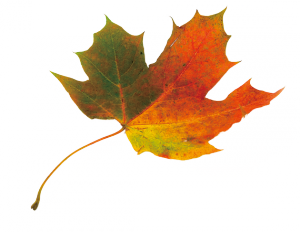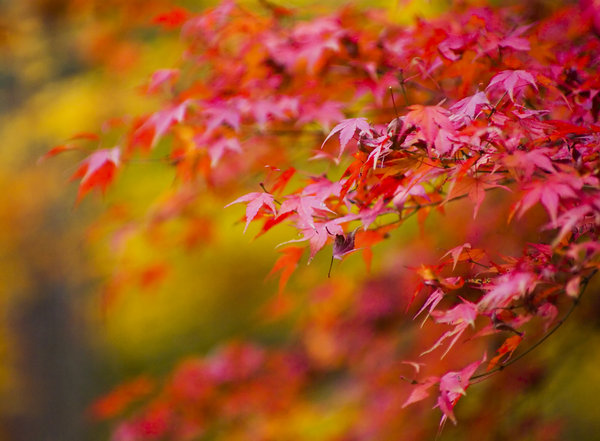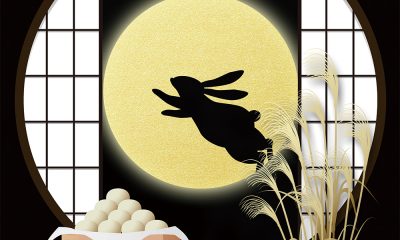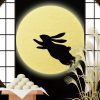Feature
Keeping the Zen in Autumn
Ready to go out and see nature’s fiery autumn show but not willing to line up with the crowds? Here are four Kyoto spots that can offer you the best of the leaves without having to join the masses.
 If you’ve been in Kansai long enough to already have experienced the popular spots in their crimson-orange glory, or you’re just not good with crowds the caliber of Osaka’s Minoh Park, or Kyoto’s Kinkaku-ji, Tofuku-ji, and Arashiyama, then it’s definitely worth putting in a little more effort to find your own slice of Kansai’s fall season. Kyoto still has the cream of the crop, but if you’re willing to go a little more out of your way – you can find some true gems of spots, and a bit of peace and quiet.
If you’ve been in Kansai long enough to already have experienced the popular spots in their crimson-orange glory, or you’re just not good with crowds the caliber of Osaka’s Minoh Park, or Kyoto’s Kinkaku-ji, Tofuku-ji, and Arashiyama, then it’s definitely worth putting in a little more effort to find your own slice of Kansai’s fall season. Kyoto still has the cream of the crop, but if you’re willing to go a little more out of your way – you can find some true gems of spots, and a bit of peace and quiet.
Saihō-ji (西芳寺)
Saihō-ji’s strategy for staving off the crowds and retaining a Zen feel to autumn leaf-viewing is that it asks for reservations to be made prior to visiting. An application by return postcard is required and they prefer for the application to arrive up to seven working days before the intended visit. The other strategy is the price, charging a ¥3,000 fee to visit, which is the highest entry charge of all Kyoto temples and shrines. Visitors are given access to the grounds for 90 minutes.
Saihō-ji is a temple in Matsuo (Nishikyō Ward, Kyoto) which is famed for its moss garden. Because of this, it is commonly referred to as Koukedera meaning “moss temple”. A registered UNESCO World Heritage Site, Saihō-ji was open to admission to the general public on a walk-in basis until 1977. After that, regulations (such as the advance application) were put into place to protect the delicate moss from the hordes of tourists that were flocking to the temple.
Before being allowed access to the garden, visitors must engage in an activity, which varies from day to day. These include zazen (sitting meditation), shakyō (hand copying sutras), and chanting sutras. Visitors are then asked to write down their name and address and a wish. The monks keep all the sutras in the pagoda and pray for all.
The most famous times to visit are either during the rainy season (early June to mid-July), when the moss becomes extra green and lush from the rains, or in late autumn when the changing leaves create a beautiful color contrast with the moss.
• Access: JR Kyoto Stn, 1-hour bus ride to Kokedera-michi, 5-min walk
• Admission: ¥3,000 (adv reservation required)
• jnto.go.jp/eng/location/spot/shritemp/saihoji.html
Yamashina (山科)
There are two spots in the Yamashina area of Kyoto which are more likely to provide a peaceful leaf-viewing experience. The reason it’s possible to escape the crowds at Daigoji (醍醐 寺) is simply because there is so much there, and the further you venture, the less company you have. Daigoji is laid out in three parts: Sambō-in, Shimo-Daigo (Lower Daigo), and Kami-Daigo (Upper Daigo).
Sambō-in and Shimo-Daigo are at the base of the mountain, easily accessible, and attract the most tourism; Kami- Daigo is on top of the mountain, requires a long, strenuous hike to reach, and is therefore less visited. The streets around Sambō-in can be freely traversed, but entering the main area, the museum, Shimo-Daigo, or Kami-Daigo requires separate admission. The first three have combined ticketing, while Kami-Daigo is separate. “Daigo” can be translated as the idea of “crème de la crème”, or “the best of the best”, and it’s easy to understand why after a visit during the turning of the autumn leaves. It’s also a very historical place; one of the pagodas was built in 951 and is said to be the oldest building in Kyoto. Daigoji has also been known to have illuminations for visitors after dark from mid-November to early December, so if you don’t have to rush home, be sure to ask if it’s happening while you’re there.
• Access: Subway Daigo Stn, 10-min walk
• jnto.go.jp/eng/location/spot/shritemp/daigoji.html
Bishamon-do Temple is the other Yamashina spot which is a great place to visit during Autumn. The temple is quite famous for its autumn leaves, but like Daigo, it is a little out of the way and so doesn’t get as crowded as the sights closer to the center of the city.
It is situated on the hillside close to JR Yamashina Station (just one stop from JR Kyoto Station), and is one of the oldest temples in Kyoto (established in the north of Kyoto in 703 and moved to its current location in 1665). It is a beautiful building with nice artworks and a meticulously-kept inner garden. There are plenty of great photo opportunities in the temple grounds and on the landscaped hillside in front of the temple, especially at this time of year when the maple leaves are blazing red.
• Access: JR or Subway Yamashina Stn, 20-min walk; Keihan-Yamashina Stn, 20-min walk
Hieizan (比叡山)
Mount Hiei lies to the northeast of Kyoto, on the border between the Kyoto and Shiga prefectures. At 848 meters, Hieizan’s leaves are among those likely to change color earlier in the season. The mountain affords views of Kyoto, Ohara, Lake Biwa and Shiga – another reason to make the extra effort to get out there. The main attraction is the temple complex of Enryaku-ji. The complex spreads out over the mountain, but is concentrated in three areas (Todo – east area, Saito – west area, and Yokawa) connected by paths. There are also more minor temples and shrines.
For making the most of the autumn colors, the cable car ride up the mountain is a highlight (if you’re in the right place at the right time, you might also spot wild deer and monkeys).
The attractions on the mountain are quite spread out, so there are regular buses during the daytime connecting them. The center for these is the bus center, in front of the entrance to the main temple complex at Tō-tō (東塔), “East Pagoda”.
• Access: JR Line, Hieizansakamoto Stn; Keihan Line, Demachiyanagi Stn; The mountain can be ascended from either the Kyoto side by Eizan cable car and ropeway, or from the Shiga side by Sakamoto cable car. There is also a toll road that leads up to the temple, which is used by buses from central Kyoto
• japan-guide.com/e/e3911.html














